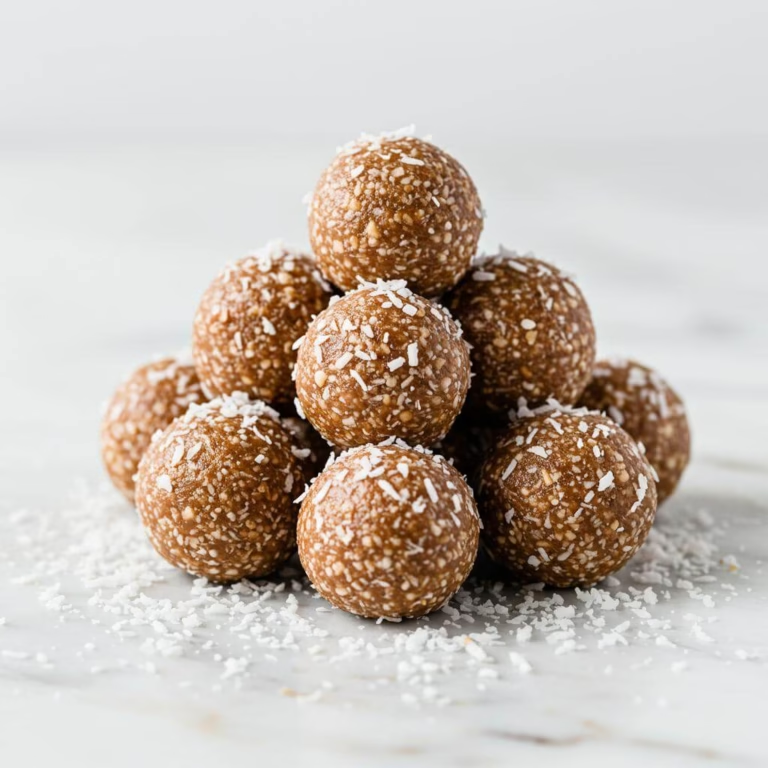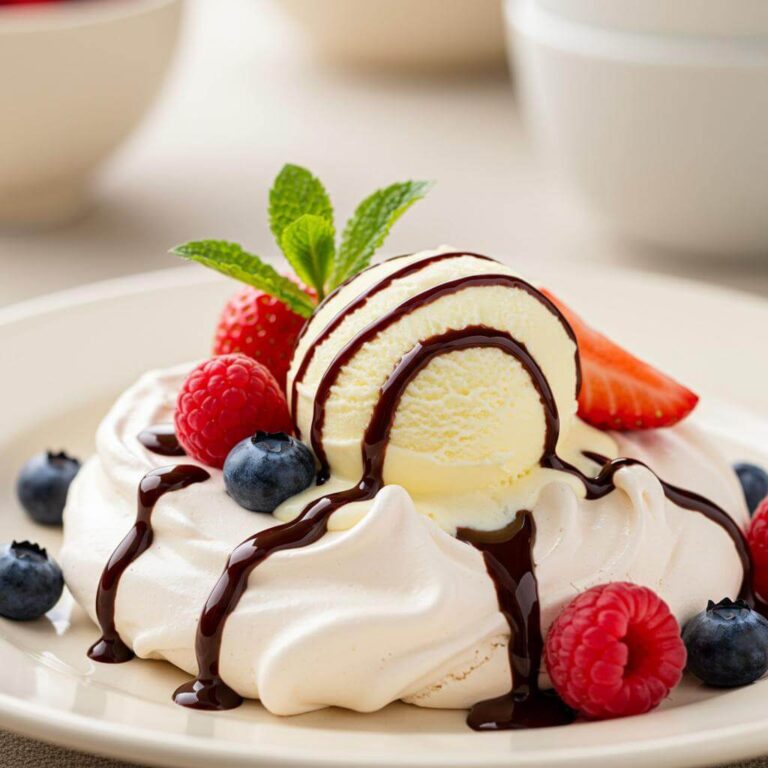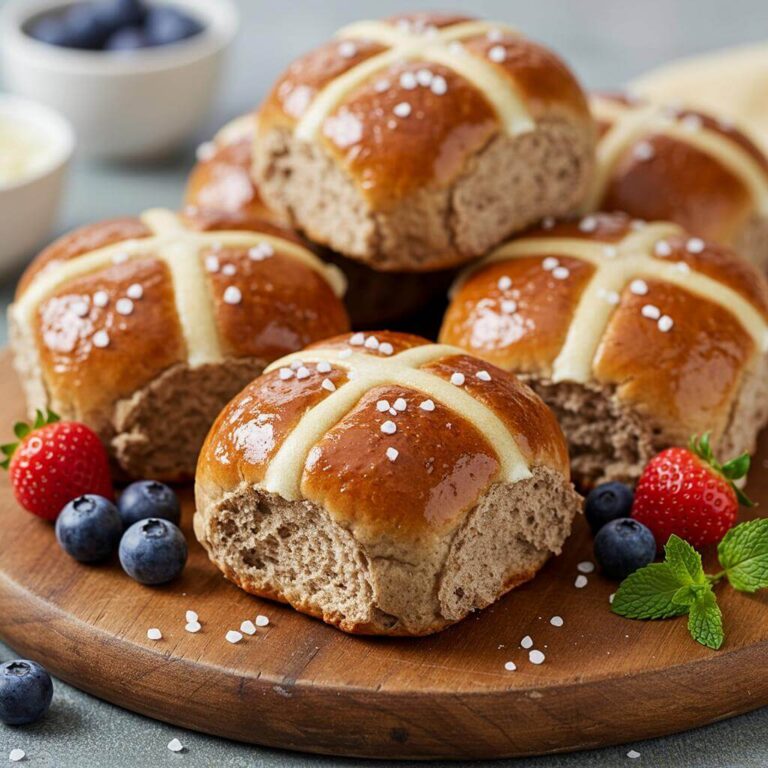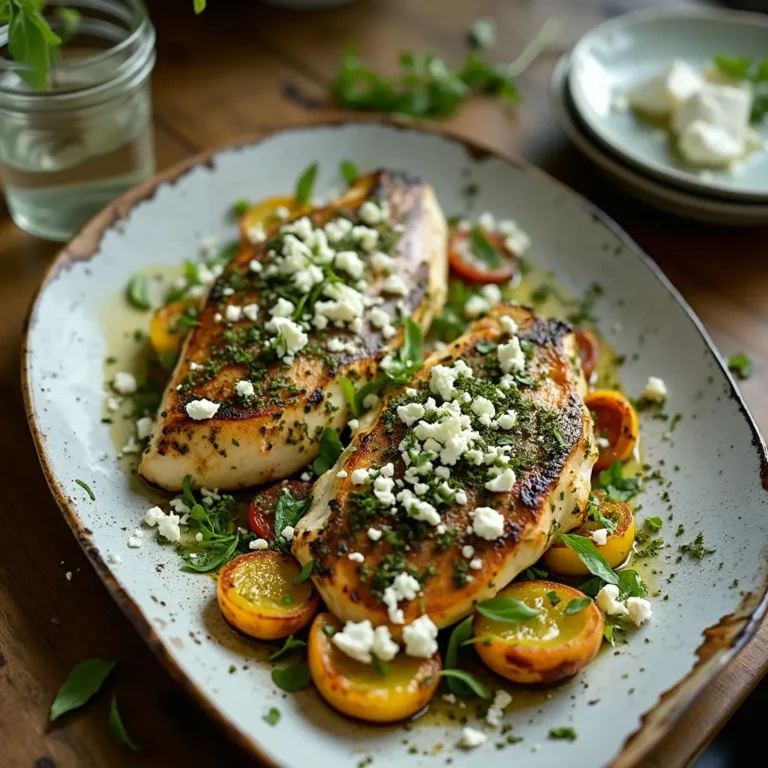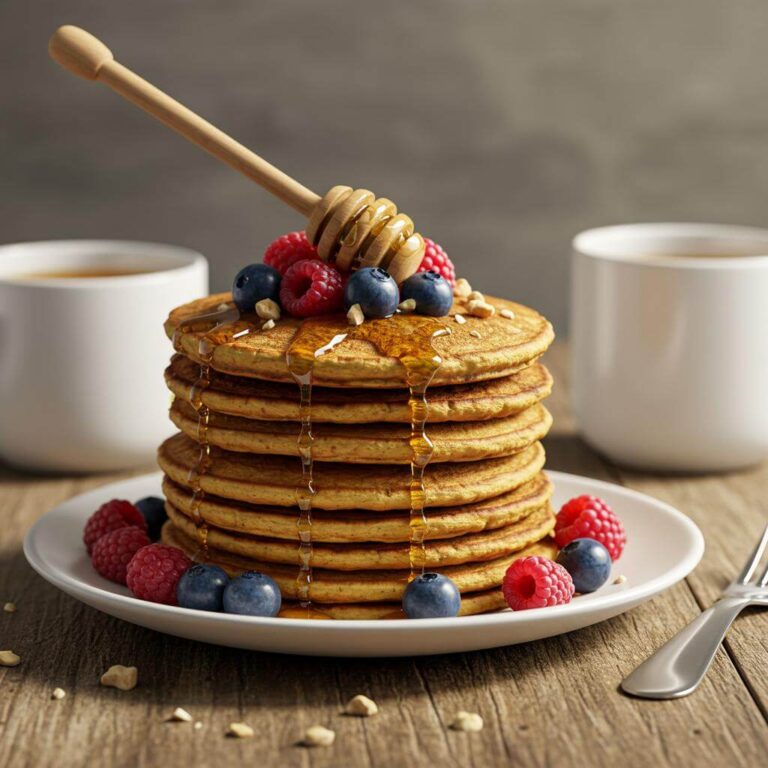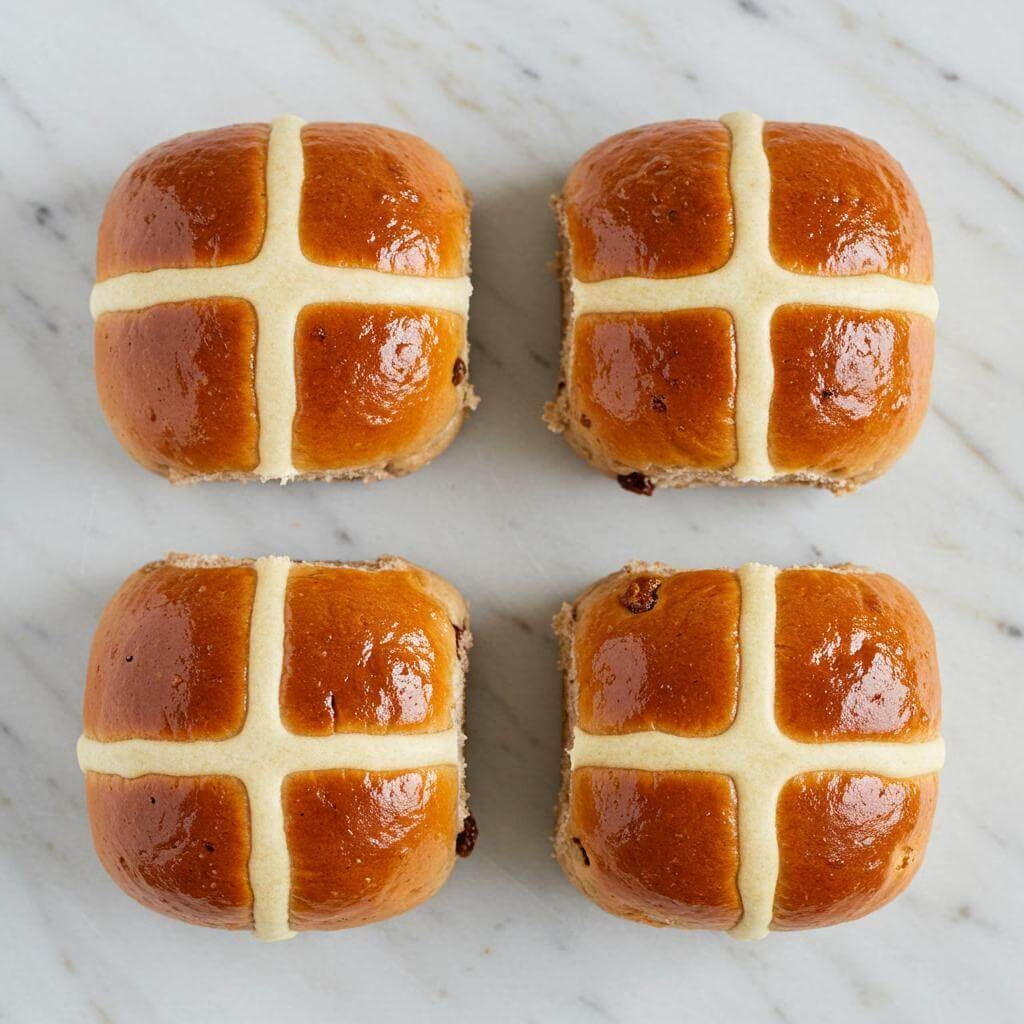
Experience the Joy of Homemade Gluten Free Hot Cross Buns!
Oh, the sheer delight of a warm, perfectly spiced bun, especially when you thought such treats were off the menu forever! If you’ve been yearning for those classic bakery marvels since embracing a gluten-free lifestyle, get ready to be absolutely thrilled. These gluten free hot cross buns are here to deliciously prove that “gluten-free” and “utterly indulgent” are a match made in heaven. Imagine sinking your teeth into a wonderfully soft, rich, and flavourful bun, generously packed with juicy dried fruit and aromatic warming spices. Sounds incredible, doesn’t it? Well, get ready to bake that dream into a delicious reality, right in your own kitchen!
For many of us navigating the world of gluten-free eating, finding baked goods that truly hit the mark – that perfect texture, that authentic taste – can often feel like an ongoing quest. But trust us, these gluten free hot cross buns are the real deal. We’re talking about a texture so delightfully fluffy and a taste so genuinely satisfying, you’d honestly struggle to guess they’re made without gluten. No more compromising with crumbly disappointments or overly dense alternatives; this recipe delivers pure, aromatic bliss in every bite. They’re the perfect treat to share with everyone, whether they eat gluten-free or not! If you’re a fan of comforting baked goodies that fill your home with incredible smells, you might also adore our recipe for The Best Gluten Free Banana Bread.
And perhaps the best part? Crafting these amazing gluten free hot cross buns at home is surprisingly easy and incredibly rewarding! We’ve designed this recipe to be as straightforward and enjoyable as possible, even if you’re relatively new to the art of gluten-free baking. The magic lies in a carefully selected blend of gluten-free flours combined with essential binders like psyllium husk. This combination is key to achieving that signature soft, slightly chewy texture we all crave in a good bun, beautifully mimicking traditional yeast bakes. This ensures a fantastic rise and a delightful, tender crumb, making your baking experience a true pleasure from start to finish.
Whipping up a batch of these delightful gluten free hot cross buns isn’t just about creating a single delicious treat; it’s about infusing joy, tradition, and wonderful variety into your gluten-free culinary repertoire. They are a fantastic way to celebrate a special occasion, brighten up a leisurely weekend morning, or simply treat yourself to something wonderfully comforting. The aroma alone, wafting through your kitchen as they bake, is enough to lift your spirits! For another sweet treat that’s perfect for cozy days and sharing with loved ones, why not try our Soft Gluten Free Cinnamon Rolls? Get ready to rediscover the simple joy of baking and impress yourself with what you can create!
Why This Gluten Free Hot Cross Buns Recipe Is a Game Changer
Say goodbye to dry, dense, or crumbly gluten-free baked goods! This recipe for gluten free hot cross buns is truly exceptional, delivering results so wonderfully soft, rich, and flavourful, you’d struggle to believe they’re gluten-free. But how does it achieve such perfection, especially when working without the magical stretchy power of gluten? It all comes down to a brilliant combination of carefully chosen ingredients and smart techniques designed specifically for gluten-free success.
The Gluten-Free Building Blocks: Flour Blend Power
Unlike many gluten-free recipes that rely on a single flour or a pre-made blend, this approach uses a thoughtful combination: tapioca starch, millet flour, and sorghum flour. Each plays a vital role:
- Tapioca Starch: This light, starchy flour provides elasticity and a slightly chewy texture that mimics some of the qualities gluten offers. It contributes to a tender crumb and a delicate crust.
- Millet Flour: Offering a slightly nutty flavour and a finer texture, millet flour adds substance and structure without being heavy. It works harmoniously with the other flours to create a balanced base.
- Sorghum Flour: Another nutritious whole grain flour, sorghum contributes a pleasing mild flavour and helps build structural integrity. The combination prevents the single-note texture or flavour issues sometimes found in simpler blends. This intelligent mix ensures a well-rounded flavour profile and a more robust structure than a single gluten-free flour could provide alone.
The Dynamic Duo: Psyllium Husk and Xanthan Gum
This is where the real magic happens in gluten-free baking that requires structure and elasticity, like these incredible gluten free hot cross buns. Without gluten’s protein network, you need alternative binders, and this recipe leverages the power of both psyllium husk and xanthan gum:
- Psyllium Husk: When hydrated, psyllium husk forms a gel. This gel network is fantastic at trapping the gases produced by yeast during proofing, allowing the dough to rise beautifully. It provides that essential ‘bready’ chewiness and helps prevent the buns from being overly crumbly. Using whole/rough psyllium husk, as specified, is crucial because it absorbs more liquid and creates a stronger, more cohesive gel than the powdered form.
- Xanthan Gum: This acts as a stabilizer and emulsifier. It works synergistically with the psyllium husk, adding elasticity and preventing the dough from spreading excessively. Xanthan gum is key to achieving that desirable “brioche-like springy softness” mentioned in the recipe. Together, psyllium and xanthan create a synthetic structure that holds the dough together, allows for expansion, and delivers a texture remarkably close to traditional yeast bread. They are truly indispensable for successful leavened gluten free hot cross buns.
Techniques for Triumph: Proofing, Shaping, and Baking
Beyond the ingredients, the methods employed are specifically tailored for gluten-free dough:
- Single Proof: Gluten-free doughs can sometimes be less stable than their gluten-containing counterparts. Optimizing for a single, well-timed proof minimizes handling and reduces the risk of the structure collapsing, ensuring a good rise in your gluten free hot cross buns.
- Dough Consistency: The description of the dough being “quite soft and sticky” is intentional. Gluten-free flours and binders require adequate hydration to perform correctly. A properly hydrated dough, even if sticky, leads to a moister, more tender final product.
- Shaping Method: The detailed shaping technique, involving folding and sealing, helps to build tension and create a more rounded, structured bun physically, compensating for the lack of gluten development.
- Strategic Baking with Steam: The initial high temperature and the use of steam are critical. The high heat encourages maximum “oven spring” before the crust sets, helping the buns rise tall. Steam keeps the surface pliable, allowing for better expansion and contributing to a smoother crust texture, which is often challenging in gluten-free baking. Removing the steam allows the buns to finish baking through without becoming heavy.
- Cooling Rack Importance: Cooling the gluten free hot cross buns on a wire rack immediately after baking is vital for allowing steam to escape. This prevents the bottom of the buns from becoming wet or gummy, ensuring a light and airy crumb.
Seamlessly Supporting a Gluten-Free Lifestyle
What makes this recipe truly stand out is how it ensures that going gluten-free doesn’t mean compromising on taste, texture, or tradition. These gluten free hot cross buns offer all the warm spices, sweet fruit, and soft crumb you expect from a classic hot cross bun. The rehydrated sultanas/raisins stay plump and juicy, adding bursts of natural moisture and flavour. The apricot jam glaze adds shine, softens the crust further, and provides that signature sticky finish. This recipe provides a reliable, delicious way to enjoy this beloved treat, making the gluten-free lifestyle feel not restrictive, but full of delightful possibilities.
By understanding the specific roles of each ingredient and the purpose behind the techniques, beginner and intermediate gluten-free bakers can approach this recipe with confidence. It’s a masterclass in how to build structure, manage moisture, and achieve wonderful texture when gluten is off the table. Get ready to bake the most satisfying gluten free hot cross buns you’ve ever tasted!

🎁 33 Gluten-Free Breakfasts
Start every day with a smile and flavor. Get our FREE recipe eBook!
Ingredients, Nutritional Information, and Additional Tips
Key Ingredients
Creating delicious gluten free hot cross buns starts with selecting the right ingredients. Each component plays a crucial role in achieving that soft, rich texture and delightful flavour:
- 85 g (½ cup) sultanas or raisins: These provide natural sweetness and moisture. Rehydrating them ensures they are plump and juicy in the final bun.
- 16 g (3 tbsp) whole/rough psyllium husk: A fundamental binding agent in gluten-free baking. Psyllium husk is essential for giving these gluten free hot cross buns their bready chewiness and necessary elasticity, mimicking some of the structural properties of gluten. If using psyllium husk powder, use only 14g as it’s more concentrated.
- 260 g (1 cup + 1 ½ tbsp) warm water: Used to activate the psyllium husk, forming a gel that binds the dough.
- 230 g (2 cups) tapioca starch: A light, fine starch that contributes to the soft, airy texture. It’s a great binder and helps create a tender crumb. (You can also use an equal weight of arrowroot starch, cornstarch (US) or cornflour (UK), or potato starch.)
- 160 g (1 cup + 3 tbsp) millet flour: A nutritious whole grain flour that adds structure and a slightly nutty flavour without being overpowering. (You can also use an equal weight of finely milled brown rice flour.)
- 70 g (⅓ cup + 3 ½ tbsp) sorghum flour: Another wonderful gluten-free grain flour that provides a soft texture and mild flavour. It works beautifully in combination with other flours to build structure. (You can also use an equal weight of white teff flour, buckwheat flour or gluten free oat flour.)
- 50 g (¼ cup) granulated sugar: Provides sweetness and helps with browning and tenderizing the buns.
- 8 g (1 tbsp) xanthan gum: Alongside psyllium husk, xanthan gum is crucial for providing elasticity and structure to gluten-free dough, preventing it from becoming crumbly. It helps achieve that lovely brioche-like springy softness.
- 8 g (1 ¼ tsp) salt: Enhances the flavours of the other ingredients and balances the sweetness.
- 8 g (2 ½ tsp) instant yeast: The leavening agent that makes the buns rise and become light and fluffy. (If using active dried yeast, use 10g and activate it first).
- 1 tsp ground cinnamon: Provides that classic, warm spiced flavour essential for hot cross buns.
- 140 g (½ cup + 1 ½ tbsp) whole milk, warmed: Adds richness and helps activate the yeast.
- 30 g (¼ stick) unsalted butter, melted: Contributes to the richness and tender texture of the buns.
- 1 UK medium/US large egg, room temperature: Acts as a binder, enriches the dough, and contributes to the tender crumb.
- 90 g (about ½ cup, 3 oz) mixed candied lemon and orange peel: Adds bursts of citrus flavour and delightful chewiness.
For the Egg Wash:
- 1 UK medium/US large egg
- 15 g (1 tbsp) whole milk
Brushing the buns with egg wash before baking gives them a beautiful golden shine.
For the Crosses:
- 50 g (⅓ cup + 1 tbsp) plain gluten free flour blend: Forms the base for the piped cross mixture. (Using a blend like Doves Farm Freee plain gluten free flour, which doesn’t contain xanthan gum, is specified).
- ¼ tsp xanthan gum: Helps make the cross mixture pliable enough to pipe easily. Omit if your blend already contains it.
- 10 g (2 tsp) sunflower oil: Keeps the baked crosses soft, preventing them from becoming hard or brittle.
- 60 g (¼ cup) water: Used to create a runny, pipeable consistency for the cross mixture.
Finishing Touches:
- 50 g (2 ½ tbsp) apricot jam: When warmed and brushed on, this gives the baked buns a lovely glossy finish and extra flavour.
- 8 g (½ tbsp) water: Added to the jam to make it runny for brushing.
Nutritional Information
These homemade gluten free hot cross buns offer a delightful treat that fits seamlessly into a gluten-free lifestyle. By using a blend of naturally gluten-free flours like tapioca starch, millet flour, and sorghum flour, you avoid the common allergens found in traditional wheat-based buns. While specific macro-nutrient counts would require detailed analysis, we can confidently highlight some key nutritional aspects based on the ingredients:
- **Gluten-Free Goodness:** The primary benefit is that these buns are completely free from gluten, making them suitable for individuals with Celiac disease or non-celiac gluten sensitivity.
- **Source of Fiber:** Ingredients like psyllium husk and whole grain flours (millet, sorghum) contribute dietary fiber, which is important for digestive health.
- **Nutrient Diversity:** Blending different gluten-free flours provides a wider range of nutrients compared to using a single type of flour.
- **Wholesome Indulgence:** Made with real butter, milk, and eggs, these buns offer a rich, satisfying quality, proving that gluten-free treats can be just as decadent and flavourful as their conventional counterparts.
Enjoying these delightful gluten free hot cross buns means you don’t have to miss out on holiday traditions due to dietary restrictions.
Substitutions & Variations
Empowering your gluten-free baking means knowing how to adapt! This recipe for gluten free hot cross buns is flexible in some areas, allowing you to tailor it to your pantry and preferences. Remember, using a kitchen scale for measuring gluten-free flours and starches is always recommended for the most consistent results.
- Yeast: If you only have active dried yeast instead of instant yeast, you can use 10g. Remember to activate it first in the warm milk with a pinch of sugar before combining with the dry ingredients.
- Starches: Tapioca starch can be substituted with an equal weight of arrowroot starch, cornstarch (US) / cornflour (UK), or potato starch. These will offer similar binding and tenderizing properties.
- Grain Flours: The millet flour can be swapped for an equal weight of finely milled brown rice flour. Similarly, sorghum flour can be replaced with an equal weight of white teff flour, buckwheat flour, or gluten free oat flour. Using different flours will slightly alter the flavour profile and texture, offering fun variations to explore!
- Dairy-Free Option: To make these gluten free hot cross buns dairy-free, substitute the whole milk with your favorite unsweetened dairy-free milk alternative (like almond, soy, or oat milk) and use a plant-based butter substitute instead of dairy butter. Ensure your milk alternative is warm.
- Egg-Free Option: Replacing the egg requires a bit more care in gluten-free baking. You could try an egg substitute like a flax egg (1 tbsp ground flaxseed + 3 tbsp water, let sit until gelled) or a commercial egg replacer. Note that this may slightly change the texture and richness. For the egg wash, you can simply use a little dairy-free milk or water for brushing the tops.
- Dried Fruit: While the recipe specifies sultanas/raisins and candied peel, feel free to experiment with other dried fruits like currants, chopped dried apricots, or dried cranberries for different flavour combinations. You could even add gluten-free chocolate chips alongside or instead of some of the dried fruit for a decadent twist!
- Spices: You can enhance the spice profile by adding a pinch of nutmeg, ground cloves, or mixed spice alongside the cinnamon for extra warmth.
Important Note on Psyllium Husk and Xanthan Gum: Based on extensive testing, these two ingredients are fundamental to the structure and texture of this specific gluten free hot cross buns recipe. They cannot be substituted with other ingredients like chia seeds or additional gluten-free flours without significantly altering the result, likely leading to a less desirable texture.
Don’t be afraid to experiment with these ideas to make these gluten free hot cross buns perfectly suited to your taste!
Essential Equipment for This Recipe
To prepare this delicious recipe, you’ll need the following kitchen tools:
- Mixing Bowls – A set of various sizes is essential for combining ingredients.
Find Mixing Bowls on Amazon - Measuring Cups and Spoons – Accurate measurements are key for baking success.
Find Measuring Cups and Spoons on Amazon - Baking Sheets – Perfect for baking cookies, roasting vegetables, and more.
Find Baking Sheets on Amazon - Whisks – Use to whisk ingredients until light and fluffy.
Find Whisks on Amazon - Spatulas – Ideal for folding ingredients and scraping bowls clean.
Find Spatulas on Amazon - Food Processors – Great for quickly chopping vegetables or nuts.
Find Food Processors on Amazon - Saucepans – For heating sauces and cooking ingredients on the stovetop.
Find Saucepans on Amazon - Chef’s Knives – A versatile knife for all your chopping needs.
Find Chef’s Knives on Amazon - Cutting Boards – Protect your countertops while you chop.
Find Cutting Boards on Amazon
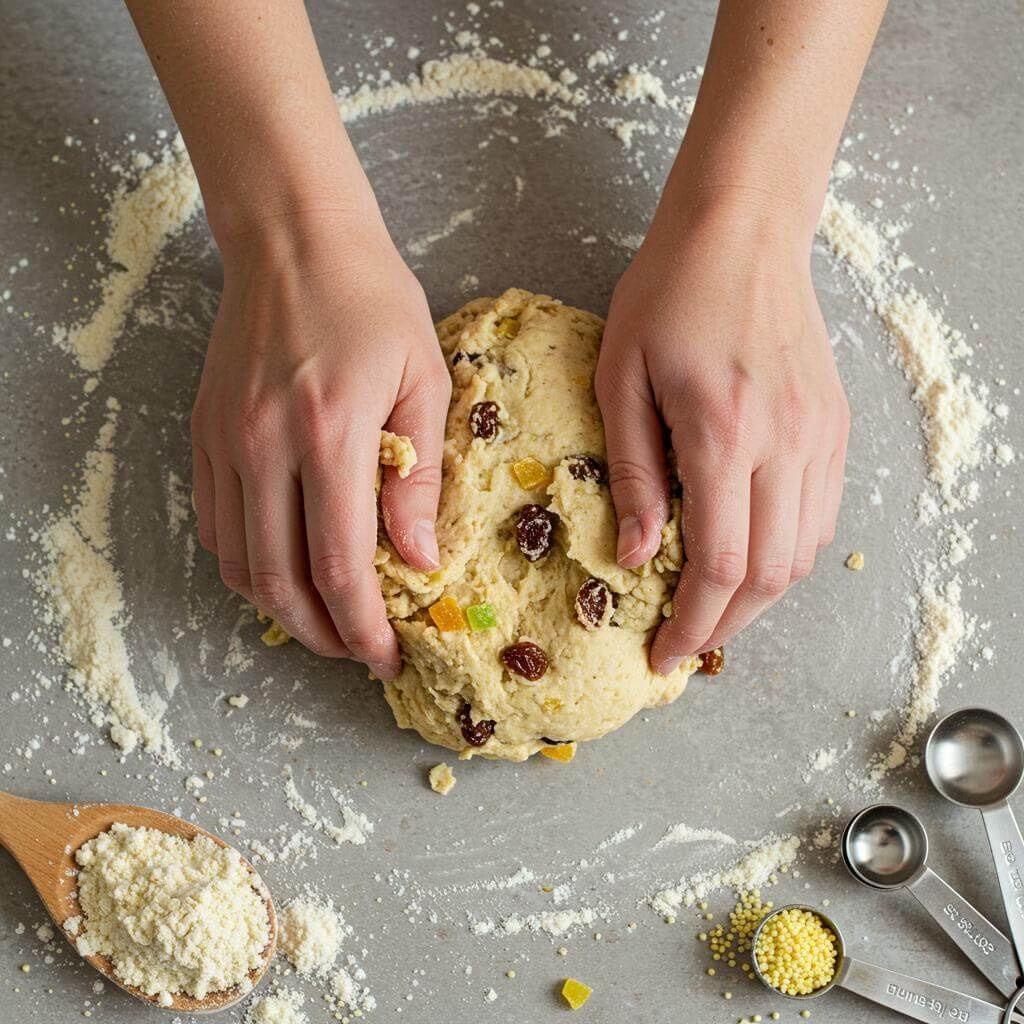
- Prepare your baking area and ingredients. Start by lining a large baking sheet with parchment paper. This prevents sticking and makes cleanup much easier. Ensure all your ingredients for the gluten free hot cross buns are measured out accurately, ideally using a digital kitchen scale for the most reliable results, as volume measurements (cups) can be inconsistent with gluten-free flours.
- Plump the sultanas or raisins. In a small bowl, pour boiling hot water over your sultanas or raisins until they are fully submerged. Let them soak for about 10 minutes. This crucial step rehydrates the dried fruit, making it wonderfully plump and juicy inside your gluten free hot cross buns, preventing them from drying out the dough. After soaking, drain the water completely, giving the fruit a gentle squeeze to remove any excess moisture. Set the plumped fruit aside.
- Form the psyllium gel. In a separate small bowl, whisk together the whole psyllium husk and the measured warm water. Whisk briskly for about 15 seconds. You will quickly notice the mixture thickening into a gel-like consistency. This psyllium gel is essential in gluten-free baking as it provides structure and mimics some qualities of gluten, helping your gluten free hot cross buns hold together and providing a pleasant texture. Set this gel aside. If using psyllium husk powder, remember to use the reduced quantity specified in the recipe notes.
- Combine the dry ingredients. In a large mixing bowl (or the bowl of a stand mixer, if you plan to use one with a dough hook), whisk together the tapioca starch, millet flour, sorghum flour, granulated sugar, xanthan gum, salt, instant yeast, and ground cinnamon. Whisk everything thoroughly to ensure the leavening, gums, and flavorings are evenly distributed throughout the flours. This step is vital for consistent results in your gluten free hot cross buns.
- Add the wet ingredients. Create a well in the center of your dry ingredient mixture. Pour in the warm milk, melted butter, room temperature egg, and the psyllium gel you prepared earlier. If you are using active dry yeast instead of instant yeast, you’ll need to activate it first by mixing it with the warm milk and a teaspoon of sugar in a separate small bowl and letting it sit until foamy (about 5-10 minutes) before adding it here.
- Mix the dough. Using a sturdy wooden spoon or the dough hook attachment of your stand mixer on low speed, begin mixing everything together. Continue mixing until the dough just starts to come together into a cohesive mass. Make sure to scrape down the sides and bottom of the bowl to incorporate any patches of dry flour. Gluten-free dough can be a bit different to work with than wheat dough, often softer and stickier.
- Knead the dough. Once the dough has mostly come together, turn it out onto a clean surface or continue in the stand mixer. Knead it by hand for a few minutes until you have a relatively homogeneous dough without any visible dry spots. A good hand-kneading technique for this dough is to repeatedly squeeze sections of the dough through your fingers, working your way around the bowl or surface to fully incorporate all ingredients. The final dough for these gluten free hot cross buns will be quite soft and somewhat sticky, but it should pull away from the sides of the bowl cleanly when mixed properly. Avoid adding too much extra flour during this stage unless the dough is unmanageably sticky.
- Incorporate the fruit. Add the rehydrated sultanas/raisins and the mixed candied peel to the dough.
- Gently knead the dried fruit into the dough until it is evenly distributed throughout the mixture. Be patient and work the fruit in carefully to avoid tearing the dough too much.
- Prepare for shaping. Transfer the dough from the mixing bowl onto a surface that is lightly but generously floured with extra millet or brown rice flour. Give the dough a quick, gentle knead here just until it forms a rough ball. Be mindful not to incorporate a large amount of additional flour, as this can make your gluten free hot cross buns dry.
- Divide the dough. Pat or roll the dough gently into a log shape. Use a kitchen scale to divide the log into 8 equal pieces by weight. This ensures all your gluten free hot cross buns are uniform in size, which helps them bake evenly.
- Shape the buns. Take one piece of dough and pat it down gently on a lightly floured surface until it’s about ½ inch (1-1.5 cm) thick, aiming for a roughly circular shape. Gather the edges of the dough and fold them upwards towards the center, pinching them together firmly to create a sealed seam, forming a small pouch. Turn this seam-side down. Cup your hand over the dough like a claw and move it in small, fast circular motions while applying gentle downward pressure to round the bun and tighten the outer surface. Finally, use the heels of your palms to rotate the bun in place, helping to seal the seam further and refine the round shape. Repeat this process for all 8 pieces of dough. Don’t worry if the surface isn’t perfectly smooth; this is characteristic of gluten-free dough and the high dried fruit content. The buns will smooth out slightly during proofing and baking due to oven spring.
- Arrange for proofing. Transfer the shaped gluten free hot cross buns onto the prepared baking sheet lined with parchment paper. Arrange them with at least ¾ inch (2 cm) of space between each bun. Proper spacing is important for gluten free hot cross buns as it allows for adequate moisture evaporation during baking, preventing them from becoming heavy or stodgy. It also encourages vertical rise rather than horizontal spread.
- Proof the buns. Lightly cover the baking sheet with plastic wrap or a large, inverted baking tray to prevent the buns from drying out. Place the sheet in a warm, draft-free spot. Let the buns proof until they have visibly increased in size, approximately doubling in volume, which typically takes about 1 hour to 1 hour 15 minutes. After proofing, the buns should be lightly touching at the edges but not completely fused together.
- Preheat your oven and set up for steam. While the buns are proofing during the last 15-20 minutes, adjust one oven rack to the middle position and place an empty baking tray (an old metal tray works well) on the bottom rack of your oven. Preheat your oven to 430°F (220°C). Note that this temperature is for a conventional oven; if using a fan oven, reduce the temperature by 20°C (to 400°F / 200°C) and consider whether you can turn the fan off, as convection can sometimes dry out gluten-free baked goods prematurely.
- Prepare the egg wash and cross mixture. In a small bowl, whisk together the egg and milk for the egg wash until well combined. In another bowl, whisk together the plain gluten-free flour blend, xanthan gum (only if your blend doesn’t already contain it), sunflower oil, and water for the crosses. Whisk until you have a smooth mixture. The consistency should be runny enough to pipe easily but still slightly viscous. If it’s too thick, add a tiny splash more water; if too thin, add a pinch more GF flour blend. It’s better for the cross mixture to be slightly too runny than too thick, as a thick mixture can become hard after baking. Transfer the cross mixture into a piping bag fitted with a small round nozzle.
- Apply egg wash and pipe crosses. Once the gluten free hot cross buns are proofed, gently brush the tops and sides of each bun lightly with the egg wash using a pastry brush. This gives them a lovely golden color when baked. Then, using the piping bag, pipe a line of the cross mixture down the length of each row of buns, and then pipe perpendicular lines across each bun to form the characteristic cross shape.
- Bake with steam (initial phase). Carefully place the baking sheet with the egg-washed and piped gluten free hot cross buns onto the middle oven rack in the preheated 430°F (220°C) oven. Immediately and carefully pour about 1 cup of boiling hot water into the empty tray on the bottom rack of the oven (be cautious of the steam!). Quickly close the oven door and immediately reduce the oven temperature to 400°F (200°C). The initial high heat and steam environment help maximize oven spring, creating taller buns, and contribute to a slightly smoother crust surface on these gluten free hot cross buns.
- Continue baking (steam-free phase). After the initial 10 minutes of baking with steam, carefully open the oven door and remove the baking tray containing the hot water. Close the oven door and continue baking the gluten free hot cross buns in a steam-free environment for an additional 20-25 minutes, or until they are a deep golden brown and sound hollow when tapped on the bottom. Removing the steam source after 10 minutes prevents the buns from becoming too heavy. If the tops of your buns start browning too quickly, you can lightly tent them with aluminum foil (shiny side up) and continue baking until they are fully cooked through.
- Cool the baked buns. Once baked, immediately slide the gluten free hot cross buns, still on the parchment paper, off the hot baking sheet onto a wire cooling rack. This allows air to circulate freely around them, maximizing steam evaporation and ensuring the crumb is soft and light rather than wet or heavy.
- Prepare the glaze. While the buns are still hot, gently heat the apricot jam with the measured water in a small saucepan over low heat or in a microwave-safe bowl in the microwave. Stir occasionally until the jam is completely runny and smooth.
- Glaze the hot buns. Using a pastry brush, generously brush the tops of the hot gluten free hot cross buns with the warm, runny apricot glaze. This gives them that characteristic shiny finish, adds a burst of flavor, and helps soften the crust further.
- Allow to cool. Let the glazed gluten free hot cross buns cool on the wire rack until they are just warm or have reached room temperature. They are truly best enjoyed slightly warm.
- Store properly. These gluten free hot cross buns are at their peak freshness the day they are baked, especially when still slightly warm. If you have any left, store them in an airtight container at room temperature for up to 2-3 days. To restore their wonderful softness on subsequent days, simply reheat a bun in the microwave for about 20 seconds – they’ll become wonderfully soft and delicious again, just like the first day.
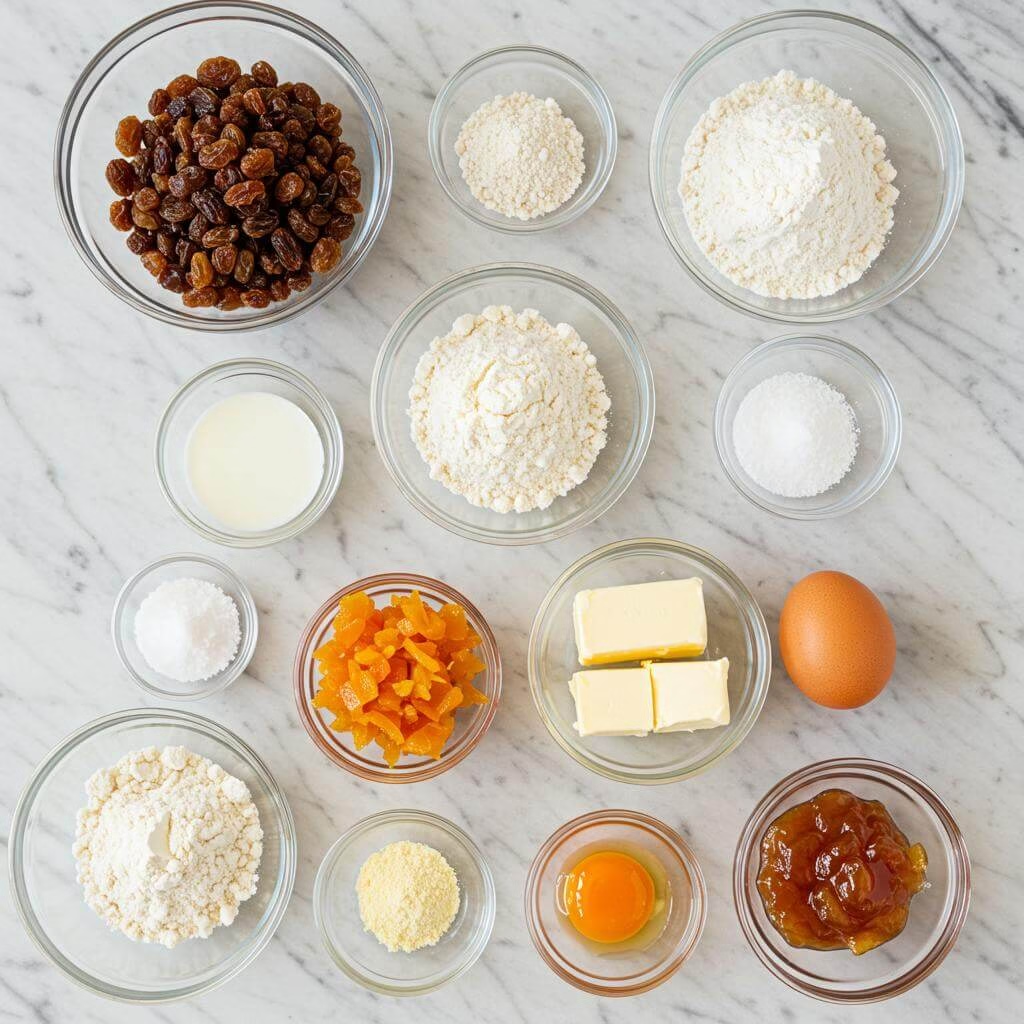
Tips for Perfect Gluten Free Hot Cross Buns
Ready to bake the most delicious gluten free hot cross buns you’ve ever tasted? These tips are designed specifically for gluten-free baking challenges, ensuring you get wonderfully soft, perfectly spiced buns every time. Follow these pointers and you’ll be enjoying warm, irresistible gluten free hot cross buns in no time!
- Weigh Your Ingredients, Especially Flours: This is absolutely crucial for successful gluten-free baking, including these gluten free hot cross buns. Gluten-free flours vary significantly in weight by volume compared to wheat flour, and even compared to each other. Using a scale ensures you have the precise ratio of flours to binders (psyllium and xanthan gum) and liquids, which is key to preventing a dry, crumbly, or gummy texture in your gluten free hot cross buns dough.
- Ensure Your Psyllium Forms a Proper Gel: Psyllium husk is a vital binder in this recipe, acting as a stand-in for gluten’s structure. Mixing it with water and letting it sit for at least 15 seconds (or until it forms a thick, gelatinous consistency) allows it to absorb the necessary liquid. Skipping or rushing this step means the psyllium won’t bind the dough effectively, leading to weak structure and crumbly gluten free hot cross buns. Use whole husk if possible, or adjust the amount if using powder as specified.
- Don’t Be Afraid of Sticky Dough: Unlike wheat dough, gluten-free dough, especially one enriched with fat and egg like these gluten free hot cross buns, is often quite soft and sticky. This is completely normal and desired! A slightly sticky dough generally yields a softer, moister bun. Resisting the urge to add excessive amounts of extra flour during mixing and shaping is key to achieving the right texture. A generously floured surface for the initial knead is helpful, but avoid incorporating too much flour into the dough itself.
- Master the Shaping Technique: While gluten-free dough won’t develop the same surface tension as wheat dough, the described shaping method (folding edges to the center, pinching, then rotating) is designed to create as much structure and surface tension as possible. This encourages the gluten free hot cross buns to rise upwards rather than spreading flat during proofing and baking, contributing to a better shape and crumb. Practice makes perfect!
- Allow Adequate Spacing on the Baking Sheet: It might be tempting to crowd them, but giving your gluten free hot cross buns enough room (at least ¾ inch, or 2cm) is essential. This allows for proper air circulation around each bun during baking, promoting even cooking and crucial moisture evaporation. If they are too close, they can steam each other, resulting in heavy, dense buns and inhibiting that desirable vertical rise. For really tall buns, space them even further apart so they don’t touch at all after proofing.
- Utilize Steam for Oven Spring: The initial high temperature bake with steam (created by pouring hot water into a tray at the bottom of the oven) is a fantastic technique for gluten-free baking. The steam helps keep the surface of the gluten free hot cross buns soft initially, allowing them to expand significantly during the first few minutes of baking (“oven spring”). This contributes to a lighter, fluffier texture and a smoother crust. Removing the steam source after 10 minutes then allows the buns to brown properly.
- Cool on a Wire Rack Immediately: Once your beautiful gluten free hot cross buns come out of the oven, transfer them to a wire cooling rack right away. Leaving them on the hot baking sheet traps steam underneath, which can make the bottom of the buns soggy and the interior gummy. Cooling on a rack allows air to circulate freely, letting excess moisture evaporate and ensuring the buns cool properly for the best soft, fluffy texture.
- Perfect the Cross Mixture Consistency: The cross mixture should be runny yet thick enough to pipe without spreading too much. Using a plain gluten-free flour blend (one without added xanthan gum if possible, adding it separately as specified) and oil is important for creating crosses that stay soft once baked, preventing them from becoming hard and brittle. Water is preferred over milk in the cross mix as it helps the crosses remain a lighter color rather than browning.
Common Mistakes to Avoid When Making Gluten Free Hot Cross Buns
Even with a great recipe, a few common missteps can impact your gluten-free baking results. Steer clear of these to ensure your gluten free hot cross buns turn out perfectly:
- Using Volume Measurements Exclusively: As mentioned earlier, relying solely on cups and spoons for gluten-free flours and binders is a recipe for inconsistency. The small variations in how flour packs can drastically change the flour-to-liquid and flour-to-binder ratios. This is the most common reason for gluten free hot cross buns turning out too dry and crumbly or unexpectedly dense and wet. Always use a kitchen scale for best results.
- Not Giving the Psyllium Husk Time to Gel: This is a critical binder, and it needs time to absorb water and create its gel-like structure. Mixing it into the dry ingredients or adding it without allowing it to gel first means it won’t disperse properly or provide the necessary binding, leaving your gluten free hot cross buns with a poor structure and a tendency to fall apart.
- Over-flouring During Kneading and Shaping: While you need *some* flour on your surface to prevent sticking, continuously adding flour to the dough to make it feel less sticky will change the intended hydration level of the recipe. This results in a drier dough that gives you dry, heavy gluten free hot cross buns instead of soft, moist ones. Embrace the slight stickiness – it’s a characteristic of well-hydrated gluten-free dough.
Frequently Asked Questions
Why are psyllium husk and xanthan gum so important in these gluten free hot cross buns? Can I leave them out?
Ah, great question! Psyllium husk and xanthan gum are absolutely key players in successful gluten-free baking, especially in a recipe like these gluten free hot cross buns. Think of them as the stand-ins for gluten. Psyllium husk provides that wonderful bready chewiness and elasticity that helps the dough stretch and rise, while xanthan gum adds elasticity and that lovely brioche-like springy softness. Together, they create the structure needed for the buns to hold their shape, capture yeast gases, and give you a texture that’s incredibly close to traditional hot cross buns. Based on extensive testing, these two ingredients are fundamental to the structure and texture of this specific recipe and cannot be substituted with other ingredients like chia seeds or adding more flour without significantly changing the results – likely making them less desirable.
The recipe says to soak the sultanas or raisins in hot water before adding them. Is this step really necessary for making gluten free hot cross buns?
Yes, absolutely! Soaking the dried fruit is a small step that makes a big difference in your gluten-free hot cross buns. Pouring boiling water over the sultanas or raisins and letting them plump up ensures they are wonderfully juicy and soft when baked into the dough. This not only makes for extra delicious bites of fruit within the bun but also helps prevent them from drawing moisture out of the gluten-free dough during baking, which can sometimes happen if you add them dry. It contributes to a more moist and tender bun overall!
My gluten free hot cross bun dough feels quite soft and sticky after mixing. Is this the right consistency?
Don’t worry, that soft and sticky texture is completely normal and actually exactly right for this gluten-free hot cross buns dough! Unlike wheat dough, gluten-free dough relies on binders like psyllium and xanthan gum rather than gluten development. The final dough will be quite soft and sticky but should pull away from the sides of the bowl once mixed properly. While you’ll transfer it to a floured surface for a moment before shaping, avoid incorporating too much extra flour, as this can make the final baked buns dry. Embrace the softness!
Can I substitute the specific gluten-free flours mentioned in the recipe? What about making these dairy-free or egg-free?
You can definitely swap out some of the flours and starches! The recipe is quite flexible in that regard. For the tapioca starch, you can use an equal weight of arrowroot starch, cornstarch (or cornflour), or potato starch. For the millet flour, finely milled brown rice flour is a good substitute by weight. And for the sorghum flour, you can replace it with an equal weight of white teff flour, buckwheat flour, or gluten-free oat flour. Using different flours will change the flavour and texture slightly, which can be fun to explore! To make these gluten free hot cross buns dairy-free, use your favourite unsweetened dairy-free milk (like almond, soy, or oat) instead of whole milk and a plant-based butter substitute instead of dairy butter, using the same weights. For an egg-free version, you can try using an egg substitute like a flax egg or a commercial egg replacer, though this might slightly affect the final texture and richness. For the egg wash, a little dairy-free milk or water can work for brushing.
Why is it important to space the gluten free hot cross buns well apart on the baking sheet for proofing and baking?
Spacing is actually quite important for gluten free hot cross buns, especially if you want them to be nice and tall! Gluten-free dough doesn’t behave exactly like wheat dough; it needs adequate space to allow moisture to evaporate properly during baking. If they’re packed too closely, the buns can end up a bit heavy or stodgy because the moisture gets trapped. Also, close spacing encourages them to spread outwards horizontally rather than rising upwards. Leaving at least ¾ inch (2cm) between them (or even more for particularly tall buns) allows for good air circulation, better moisture evaporation, and helps them rise vertically into lovely rounded shapes.
What’s the best way to store these delicious gluten free hot cross buns to keep them soft, and how long do they last?
These gluten free hot cross buns are definitely at their absolute best enjoyed warm from the oven on the day they’re baked – that’s when they’re their softest and most flavourful! However, they do store well. Simply place them in an airtight container and keep them at room temperature. They will stay good for 2 to 3 days. To bring back that lovely soft texture on subsequent days, just pop one in the microwave for about 20 seconds. Reheating really does make them taste almost as fresh and soft as they were right after baking!
The recipe suggests using steam in the oven for the initial baking. How does this help gluten free hot cross buns?
Adding steam to the oven during the first 10 minutes of baking is a fantastic technique for gluten-free baking! The high heat combined with the steam creates an environment that helps maximise oven spring – that lovely burst of rising the buns get when they first hit the hot oven. The steam also helps keep the surface of the buns moist initially, which contributes to a slightly smoother crust compared to baking in a dry oven from the start. It’s a trick to get the best possible rise and appearance from your gluten free hot cross buns.

